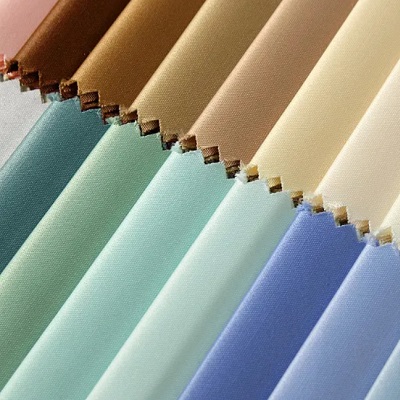In today’s fast-paced fashion world, consumers are no longer satisfied with style alone — they also demand comfort, performance, and eco-friendly production. Knitted fabrics have emerged as the perfect solution, offering breathability, stretch, and versatility. Whether for sportswear, women’s fashion, or home textiles, knitted fabrics play a vital role in the global textile supply chain.
This article highlights the advantages of knitted fabrics, current industry trends, and what international buyers should know before choosing the right supplier in 2025.
Why Knitted Fabrics Stand Out
Unlike woven fabrics, knitted fabrics are created by looping yarns, giving them a naturally elastic structure. This simple yet powerful characteristic brings many advantages:
- Excellent comfort and flexibility for daily wear
- Breathable and lightweight, suitable for warm climates
- Strong recovery after stretching, maintaining shape
- Adaptability to functional finishes such as anti-bacterial or quick-dry
Popular Types of Knitted Fabrics
- Jersey Knit – Everyday T-shirts, dresses, and basic fashion wear.
- Rib Knit – High elasticity, often used in sportswear and fitted garments.
- Interlock Knit – Dense and smooth, ideal for premium apparel and children’s clothing.
- Piqué Knit – Textured and breathable, widely used in polo shirts.
- Performance Knit – Engineered for moisture management, UV protection, or odor resistance.
Global Applications
Knitted fabrics are not limited to fashion. Their adaptability allows use in multiple industries:
- Fashion Apparel: Dresses, skirts, leggings, and casual tops.
- Sports & Fitness: Yoga pants, compression tops, and running gear.
- Children’s Clothing: Safe, soft, and irritation-free textiles for sensitive skin.
- Home & Lifestyle: Decorative covers, bedding, and furniture textiles.
Key Trends in 2025
- Sustainable Knitting – Growing use of organic cotton, recycled polyester, and bamboo blends to reduce environmental impact.
- Smart Textiles – Integration of conductive yarns for wearables and health monitoring.
- Fashion-Tech Fusion – 3D knitted structures and seamless garments offering new design possibilities.
- Global Supply Shift – More buyers sourcing from certified suppliers in Asia to balance cost and compliance.
Buyer’s Checklist for Sourcing Knitted Fabrics
For international buyers, choosing the right knit fabric supplier requires careful evaluation. Consider the following:
- Fabric Weight (GSM): Match fabric density with the final garment type.
- Testing & Quality Control: Ensure shrinkage, color fastness, and elasticity tests are performed.
- Certifications: OEKO-TEX, GOTS, and GRS prove eco-compliance and product safety.
- Lead Times & MOQ: Ask for flexible production to meet seasonal demands.
- Customization: Look for suppliers who offer dyeing, printing, and finishing services.
Conclusion
The rise of knitted fabrics is no coincidence. Their comfort, adaptability, and alignment with sustainability goals make them an essential choice for global brands in 2025.
At [Your Company Name], we provide a wide range of knitted fabrics tailored for fashion, sportswear, and home textiles. With eco-certified production, strict quality control, and global shipping capability, we help international buyers source fabrics with confidence.
Contact us today to request samples, catalogs, or a personalized quotation.


